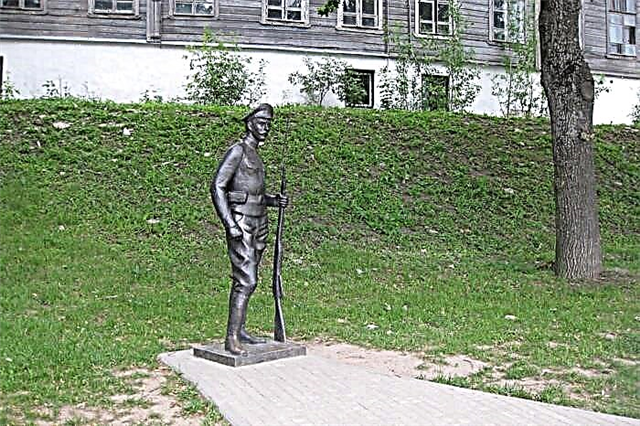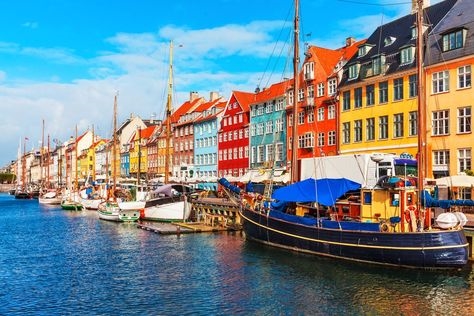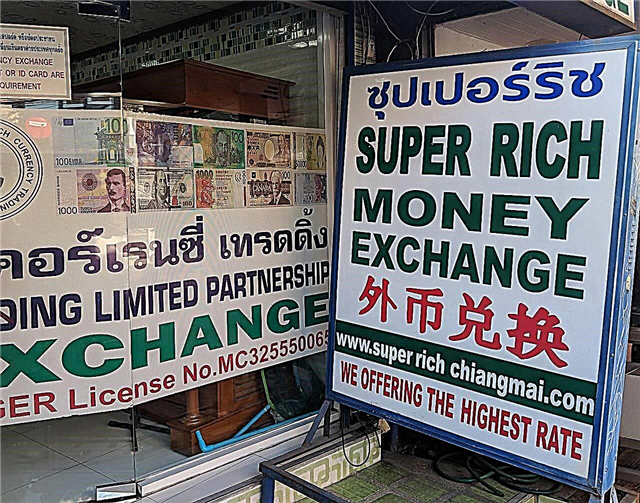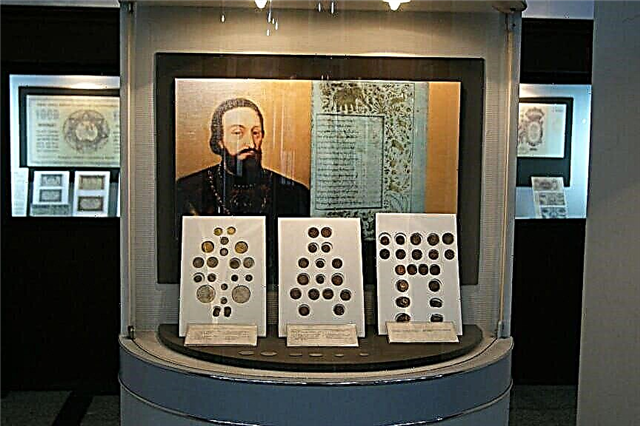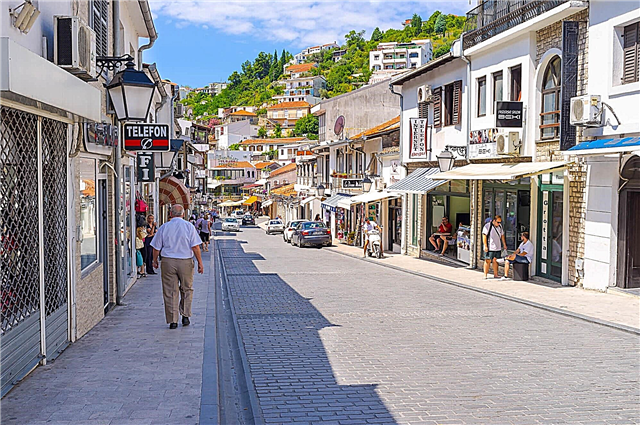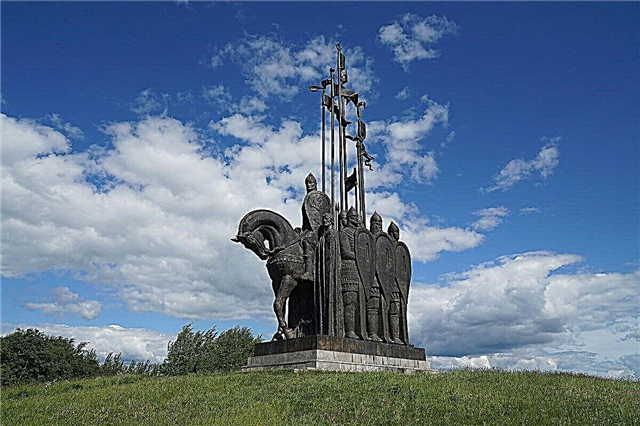Pskov is inscribed in the history of the country for many reasons. The city is associated with the baptism of Russia and the Battle of the Ice, but there are other bright pages about which less is known. For example, about "Attack of the Dead" - the battle of the First World War. The authorities and activists try to cover all topics and for decades have initiated the installation of monuments in honor of famous people, heroes and events.
Pskov is rich in monuments of different trends and styles. Here you can find typical sights, such as the sculpture of Lenin on the eponymous square, and something out of the ordinary notions of monumental art. Tourists should pay special attention to the "Battle on the Ice", "Pskov Sketch", "Dome" and "head" of Jan Sibelius.
Historical and modern monuments of Pskov
List of the most famous monuments in the city.
Monument "Battle on the Ice"
An impressive sculptural group has been standing on Sokolikha Mountain since 1993. From here to the real battlefield about 100 km. The sculptor Ivan Kozlovsky believed that such an important historical event should be immortalized by an equally large-scale monument. The total height of the monument is over 30 meters. Alexander Nevsky is depicted on a horse, and next to him are vigilantes with raised spears and small banners.
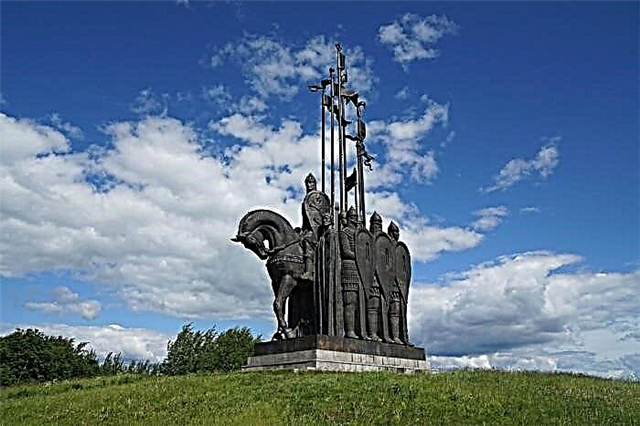
Memorial complex "Eternal Flame"
Created for the 30th anniversary of the liberation of the city. The complex consists of the tomb of the unknown soldier, the Eternal Flame and a monument. The monument itself consists of 15 vertically mounted gun barrels. They are fastened together in 2 tiers. The memorial is located in the central region of Pskov. The remains of an unidentified defender of the region, who died near the village of Batkovichi, were transferred here in 1974.
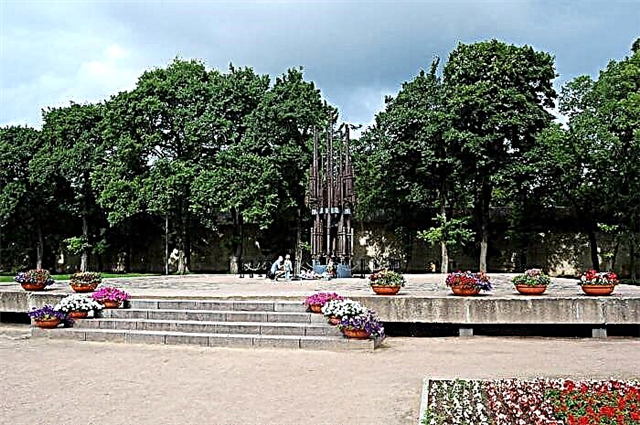
Monument to V.I.Lenin
It has been standing on the square of the same name since 1960. Sculptor - Gennady Arapov. In the background is the building of the State University. In the past, this place played a significant role in the public life of the city. Large events, memorial actions were held here, demonstrations began. Discussions are underway about changing the appearance of the square, so the monument may be moved or removed for storage in the near future.
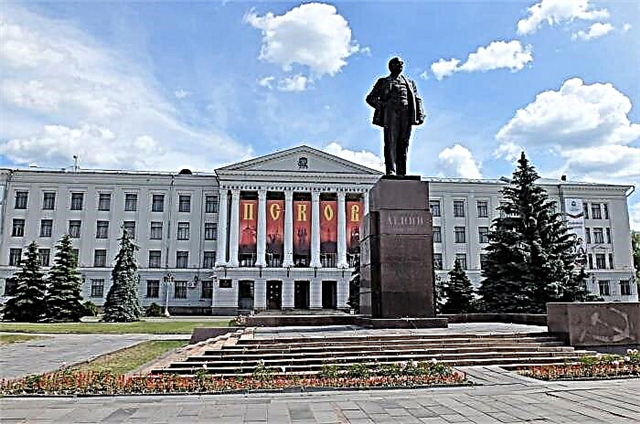
Monument to Princess Olga
As part of the celebration of the 1100th anniversary of Pskov, several attractions appeared in the city. One of them is a monument to the Equal-to-the-Apostles Princess Olga in the Children's Park. The sculptor Vyacheslav Klykov depicted the first Russian Orthodox church with a young grandson. Subsequently, Vladimir will have to baptize his fatherland. The total height of the monument is about 9 meters. Pskov saints are depicted on a snow-white cylindrical pedestal.
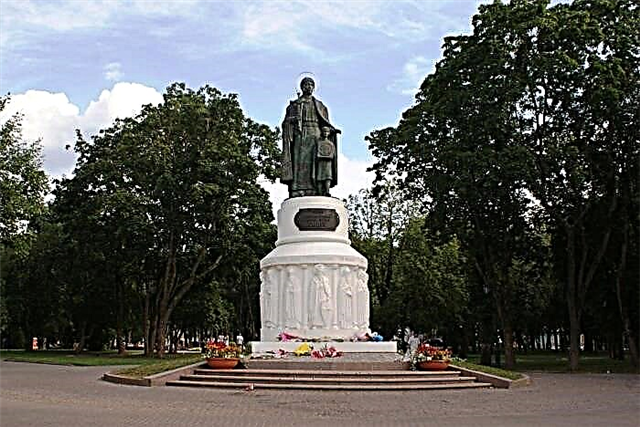
"Pskov skimmer"
A monument was erected in 2014 in honor of the 1111th anniversary of the city and consecrated to local blacksmiths, who have been known throughout the country for a long time. A bronze brace sits on a bench in a children's park. In his hands he holds a hammer and a small horseshoe. There is a small anvil in front of him. The author of the project is Igor Golubev. He emphasizes the symbolism of his creation: the scraper holds out a horseshoe to people, as if giving them happiness.
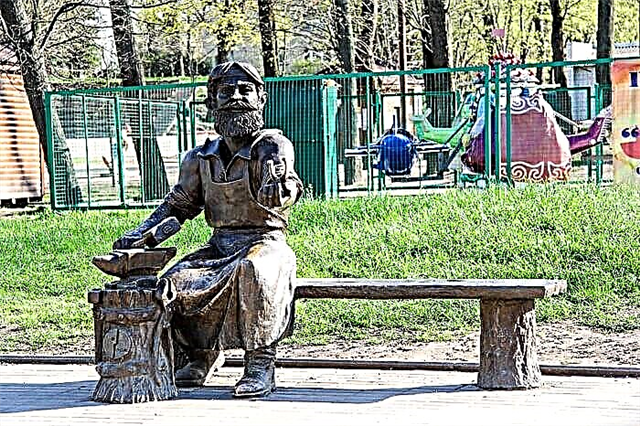
"Two captains"
The monument was erected in 1995 in front of the library. It is named after Veniamin Kaverin, the author of the book "Two Captains". The composition looks dynamic, as if the characters have just left the pages of a novel. The project was developed by a group of St. Petersburg sculptors. The writer did not live to see the opening ceremony, but he saw sketches and made changes so that the monument would convey the spirit of his history.
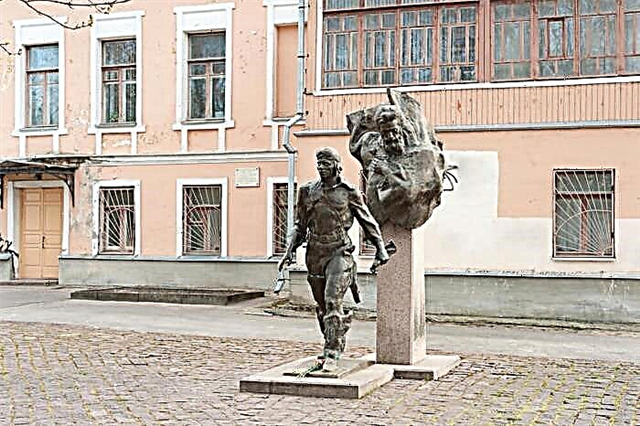
"Pushkin and the Peasant"
It is believed that he came to Pskov about 20 times and worked actively here. The all-Union poetry festival named after Alexander Sergeevich was held in the region. As part of this event in 1983, the monument was unveiled. The people also call him "Pushkin and the nanny". A sculptural group was cast from bronze according to the project of the sculptor Oleg Komov in Mytishchi. The height of the monument is more than 3 meters, the pedestal is more than 1.5 meters.

Monument to Hero-Paratroopers
A monument called "Dome" is located in the village of Cheryokha, Pskov region. The opening ceremony took place in 2002. The author of the project is Anatoly Tsarik. The architect immortalized the memory of the parachute company from Pskov, which was practically destroyed during the Chechen war. A snow-white parachute on metal slings is opened above the model of a mountain peak. Inside the dome are the autographs of the paratroopers and the star of the Hero of Russia.
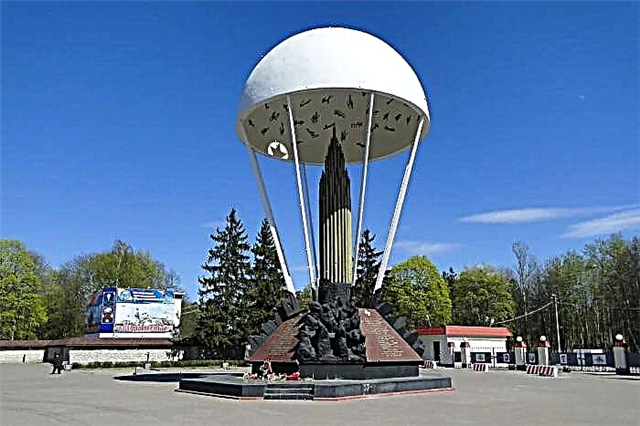
Monument to the heroes of the First World War
Opened in August 2014. The creation of the monument was initiated by the Russian Military Historical Society. Salavat Shcherbakov won an open competition and designed the monument. The sculptor depicted a Russian soldier in full uniform during the attack. He rushes into battle with a bayonet rifle in his hands, and behind the hero's back is developing an impressive banner - the symbol of the Pskov infantry regiment.
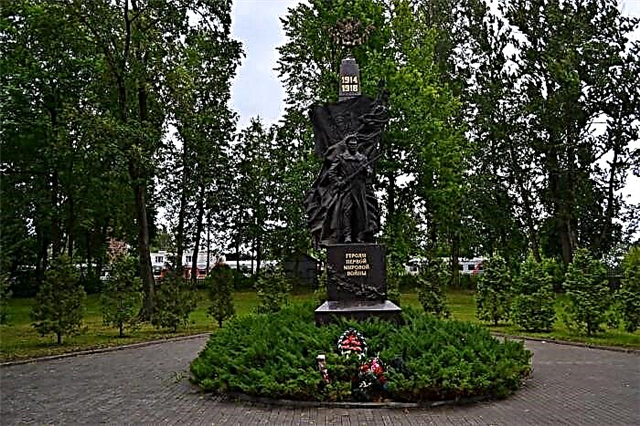
Monument in honor of the 300th anniversary of the victory over the troops of Stefan Batory
In the summer of 1581, the siege of Pskov began with an army of many thousands of the Polish king Stefan Batory. The garrison, with the help of local residents, held the defense for 6 months and did not allow the enemy to take the city. The archaeological community initiated the installation of an obelisk on a 5-meter-high embankment in 1881. The monument is made of bricks and covered with decorative plaster. A cross is placed on top.
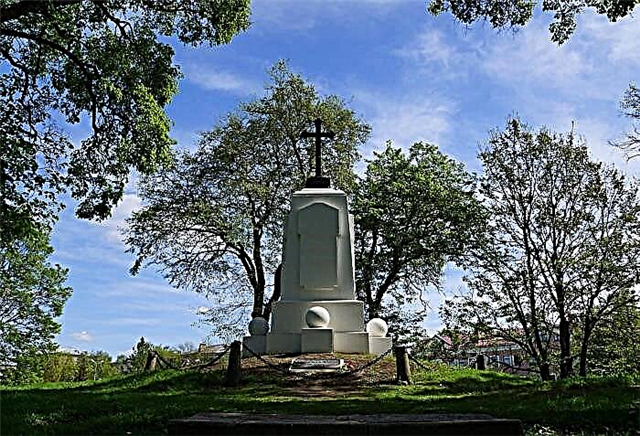
Stele "City of Military Glory"
Location - Victory Square. The opening ceremony took place in 2010. Such steles are installed in all cities of military glory. The monuments look approximately the same and differ only in coats of arms and images on the corner bas-reliefs. They show the key events of the Great Patriotic War associated with Pskov. A double-headed eagle flaunts at the top of the stele. The author of the joint project is Salavat Shcherbakov.

Bust of Alexander Nevsky
Solemnly opened on the territory of the Pskov branch of the Academy of the Federal Penitentiary Service in 2015. This monument is part of the "Alley of Russian Glory" project. It was launched to raise the patriotic spirit in the country and to remind citizens of important pages of history. The author of the bust is Anatoly Dementyev. The height together with the pedestal is about 3 meters. The attraction turned out to be laconic and colorful.
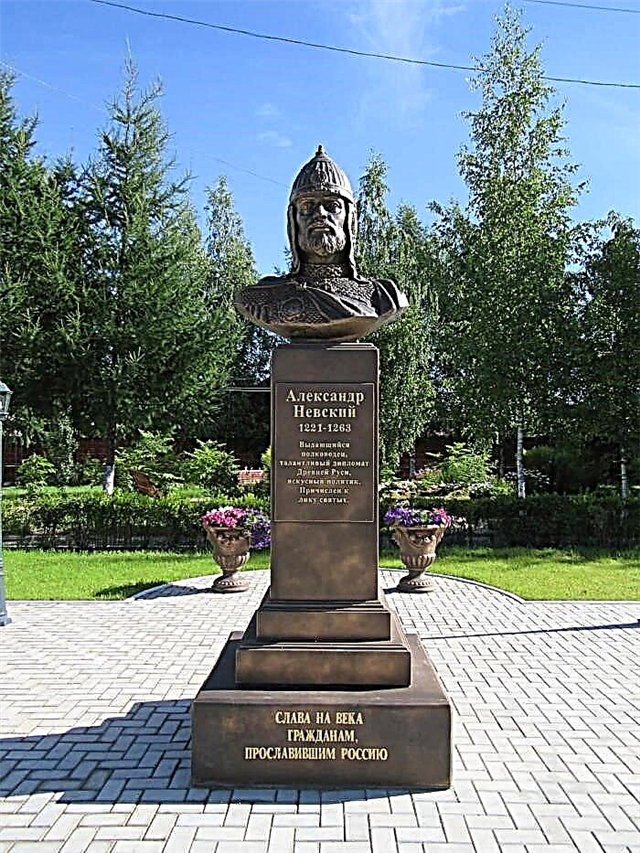
Monument to Princess Olga on Rizhsky Avenue
Princess Olga is revered in the city, so it is not surprising that in 2003 another monument was opened in her honor. Zurab Tsereteli worked on the project. As conceived by the sculptor, the mother of Prince Vladimir stands on a pedestal with a sword and a shield. An Orthodox cross is clearly visible on the princess's chest. The figure is cast from bronze and has a height of more than 3 meters, and the pedestal is made of red granite and rises by 4 meters.

Monument to S. M. Kirov
The monument in honor of the secretary of the Central Committee of the All-Union Communist Party of Bolsheviks Sergei Mironovich Kirov was cast at the Monumentskulptura plant according to the project of the sculptor Nikolai Tomsky. The grand opening of the monument took place in 1946. The pedestal is remarkable: it is assembled from gray granite blocks, laid on top of each other. In 1953, the height of the pedestal was further increased. Symmetrical flower beds are laid out on both sides of the monument.
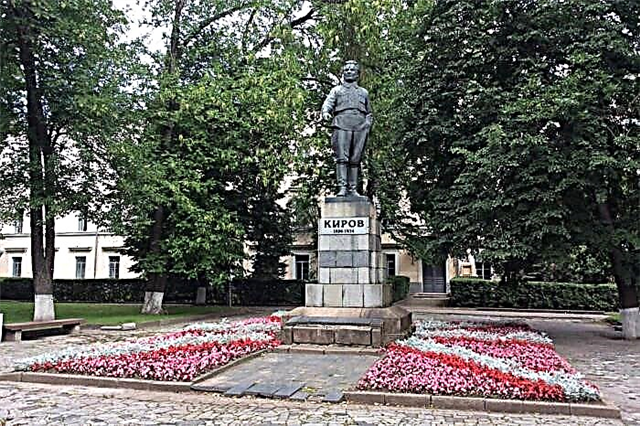
Monument-tank T-34
The attraction is dedicated to the liberators of Pskov. The tank can be found on the 50th Anniversary of October Square. Initially, a different place was chosen for it, but it was postponed to the 30th anniversary of the liberation of the city. The T-34 was placed on a wide rectangular platform. Its edges are covered with imprint and information about past events. Memorial events are held annually around the monument.
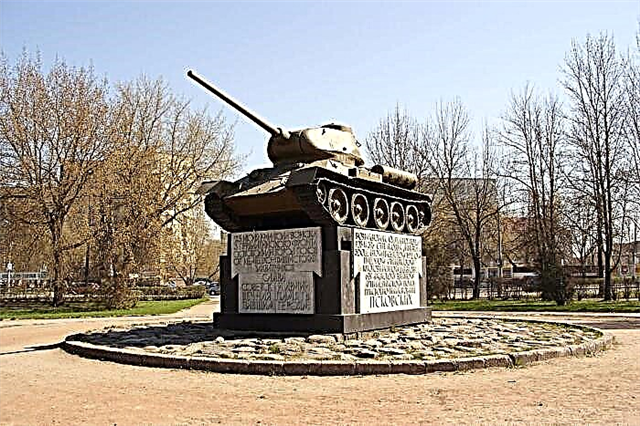
Bust of M. Kutuzov
In 1997, the 250th anniversary of the great commander was celebrated. At the same time, his bust was solemnly unveiled in the park named after Kutuzov. The project was fully financed by the city. The development was carried out by Viktor Shuvalov.As planned by the authorities, the monument should become a call to residents to be strong and wise. Attraction nearby - Pushkin Academic Drama Theater.
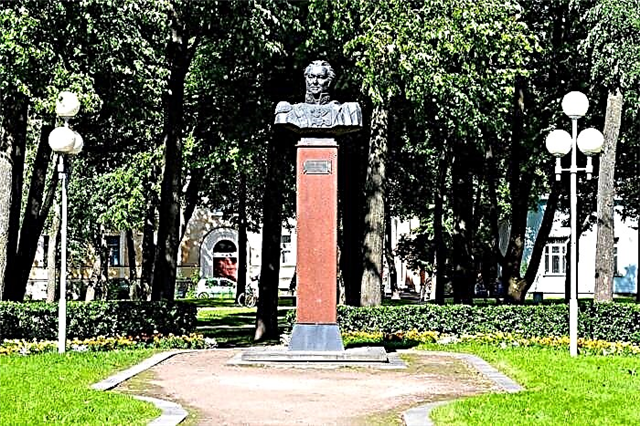
Monument to the Fighters for the Cause of the Revolution
Created in memory of the victims of the White Guards. Already in 1923, when the city was under the control of the Red Army, it was decided to erect a monument to perpetuate the fallen fighters for the cause of the revolution. During the Great Patriotic War heroes of resistance were also buried here. Some of the remains of the soldiers were moved to this territory after the end of the war. Now the stele needs reconstruction.
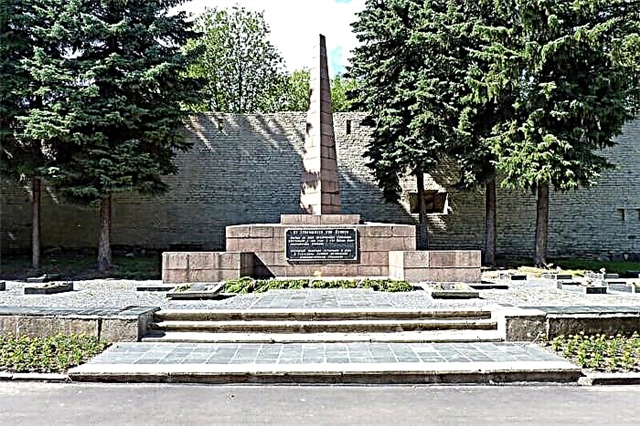
Memorial "Monument to the partisans"
Refers to the monuments of Victory Square. Created in 1985 outside the wall of the Okolny city. The memorial is full of symbolism. Granite boulders, trees, mini-fountains and a pond are part of the composition. The complex is often called the "Partisan Grave". During the war years, it was customary to bury heroes by large stones or plant a tree nearby, so that later it would be easier to find the remains. The commemorative sign bears a dedication to the fallen underground workers and volunteers.

Monument to S.G. Baykov
Sergei Baikov - Hero of the Soviet Union. He is the first representative of the engineering troops who died during the Great Patriotic War. Baikov sacrificed himself by blowing up the bridge to prevent the Nazis from crossing to the other side of the river. The creation of the bust was developed on a voluntary basis. It was cast in the capital, and then transported to Pskov. The opening took place in 2015 at the intersection of Baikova and Zapadnaya streets.
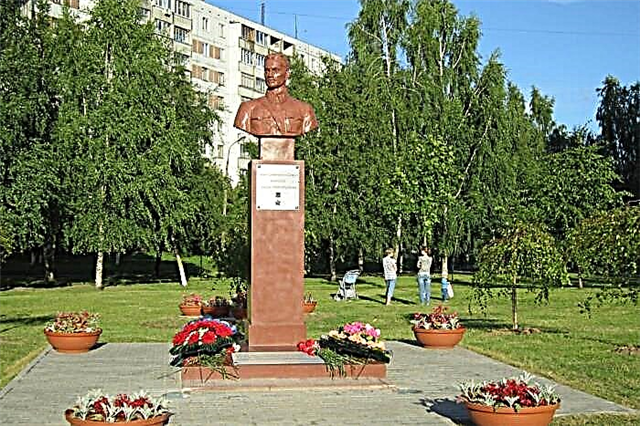
Monument in honor of the 50th anniversary of the Red Army
The installation site is a former theater of military operations, where battles between the young Red Army and the Kaiser's troops took place. The obelisk, 47 meters high, looks like a three-edged bayonet, rests on a base made of granite. In the background is a high relief of wrought copper. It depicts pages of the history of the Red Army from the moment of creation to the Great Patriotic War. Attraction nearby - Alley of Heroes of the Soviet Union.
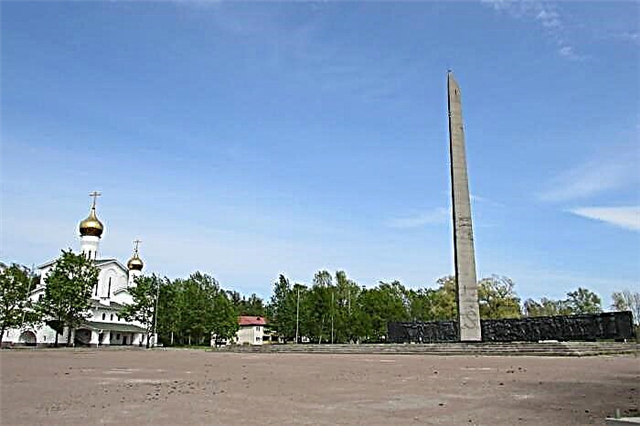
"Monument to the bus-worker"
On the occasion of the Day of Road Transport Workers in 2017, a new city object appeared on Leon Pozemsky Street. This yellow, refurbished bus, now mounted on a pedestal, has been on the line since 1987. In 2000, it was removed from flights, but adapted for other needs of the bus fleet. LiAZ-677 is one of the most popular models. Therefore, it was her representative who was chosen for the role of the monument.
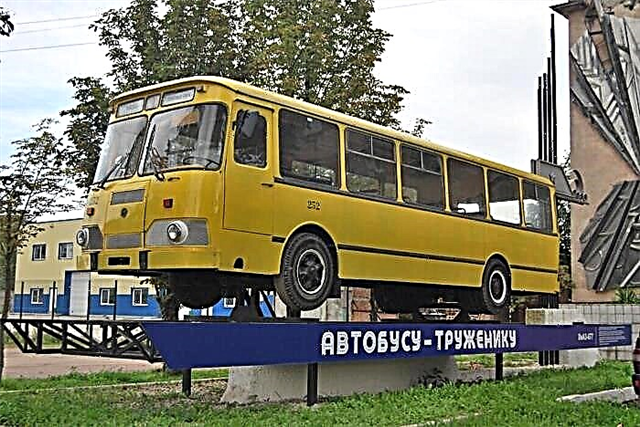
Memorable sign to the Pskov naval commanders
It has been located between Detskaya and Profsoyuznaya Streets since 2011. The location for the installation was not chosen by chance: on the contrary, a river port worked in the past. On three sides, the site was fenced off with a sea chain. In the center is a sail-shaped stone with a fixed sign. In front of him are two crossed anchors. Behind - a model of a lighthouse. The plates contain the names of prominent naval commanders and navigators from Pskov.
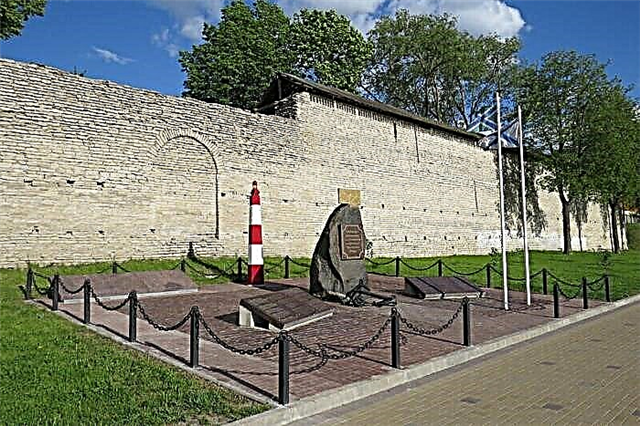
Post road Riga-Moscow
This postal route is considered the first international one in the Russian lands. Officially, it had five stopping points Moscow-Tver-Novgorod-Pskov-Riga. The memorial sign in honor of the 340-lei of the tract turned out to be modest: a pillar painted in a blue and white checkered, and a plate with information. The monument was erected in 2008. Access to it is free, at the moment the appearance of the structure leaves much to be desired.
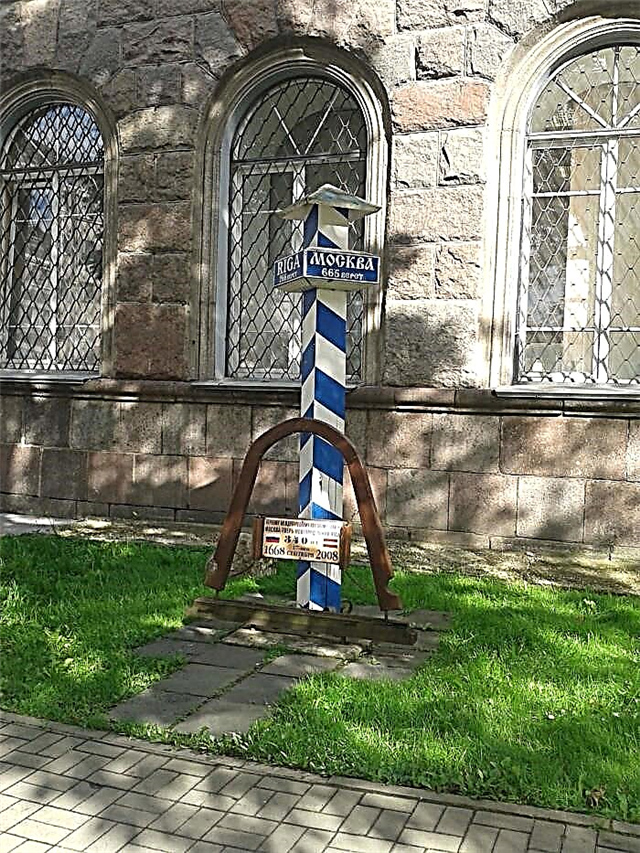
Monument to Jan Sibelius
The Art Nouveau monument is located on the Velikaya Embankment in the Square of Twinned Cities. The monument is a low wall on which an enlarged bronze copy of the head of the Finnish composer Jan Sibelius is fixed. This work of sculptor Toivo Jaashminen is a gift from the sister city of Kuopio. Locals say: everyone sees in Sibelius's gaze what he wants to see.
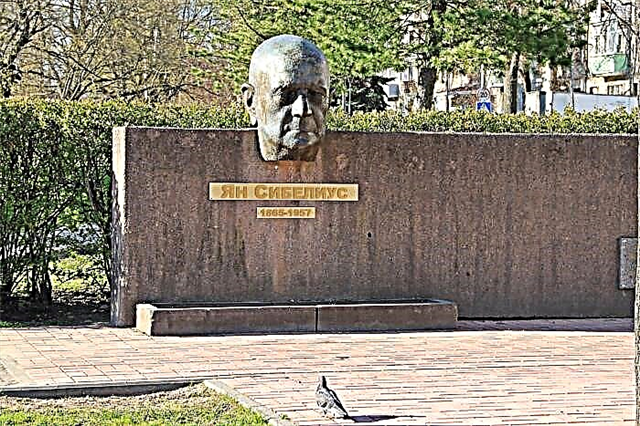
Monument to Vladimir Kotlinsky
Installed in the central area of the city, not far from the embankment. Vladimir Kotlinsky is a hero of the First World War. He is depicted in full growth with a bayonet weapon in his hands. The second lieutenant looks older than his years: he died at the age of 21. Kotlinsky led soldiers into battle near the walls of the Osovets fortress. The Germans poisoned them with gas, so the battle was called "Attack of the Dead". Subsequently, the remains of Vladimir were transferred to Pskov.
